Goiing through all my Bishopton pictures for a book, I found another stash of images - with all the fuss about the police etc I'd put them in a different folder and forgot about them. So here's a kind-of mini report:
This is one of the Bertrams beaters used to pulp guncotton:
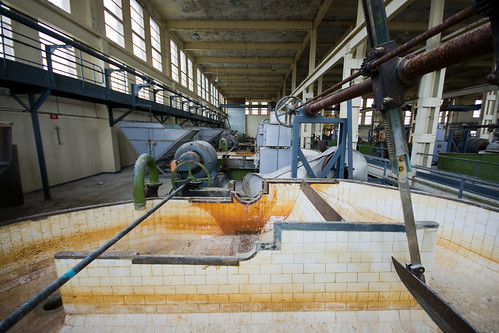
One of the boilers used to boil acid out of the guncotton:
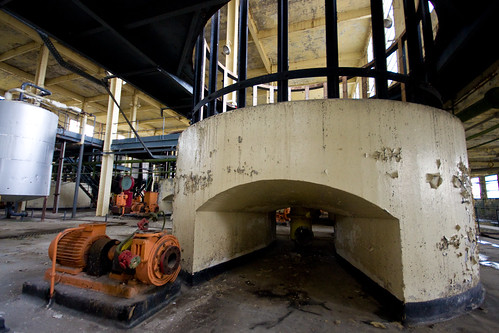
One of the glass columns in the Factory I acids section:
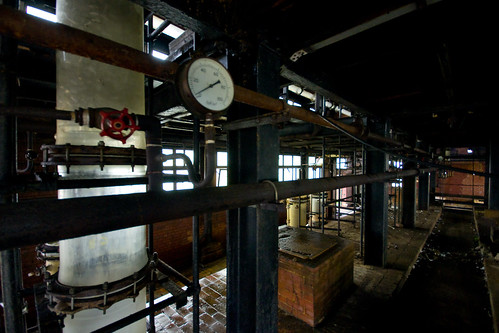
Seven farms were compulsiorially purchased to build Bishopton - some of the farm buildings were demolished, others were converted:
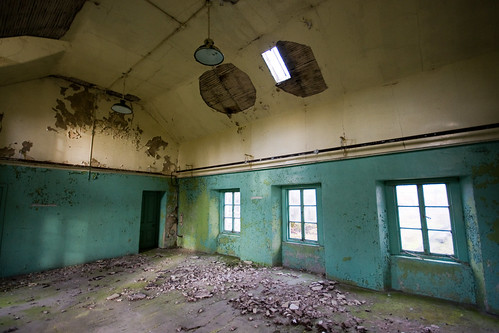
In the Combustible Charge Container section, cordite was pressed into casings using hydraulic presses.
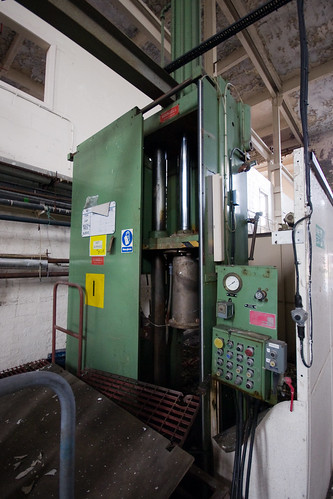
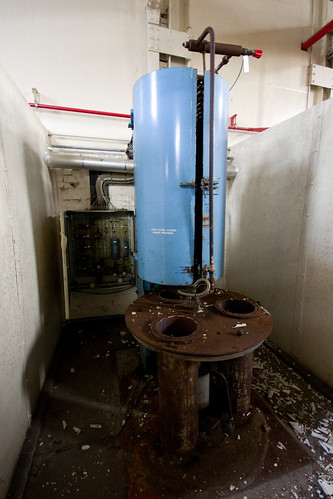
The CCCs were then lacquered and dried in an oven, hanging from hooks on a conveyor.
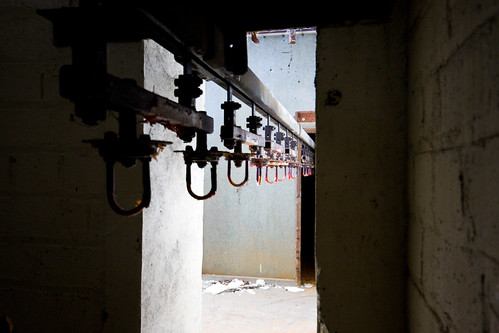
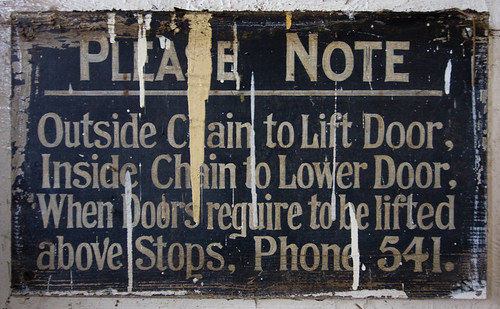
The CCC section also had Bertrams beaters - each Factory at Bishopton (there were three) was almost totally independent, so there was a lot of duplication.
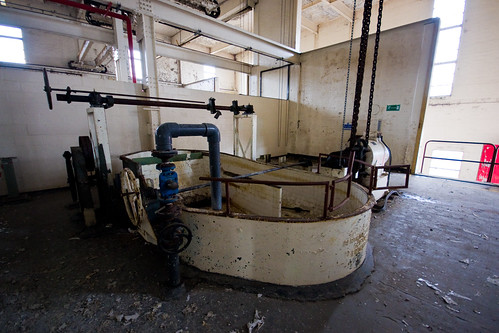
Near the CCC section is the Picrite Section - picrite is a flash-supressing additive. This is the old picrite section:
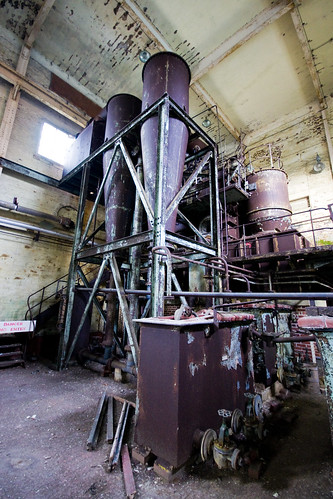
And the "new" picrite section:
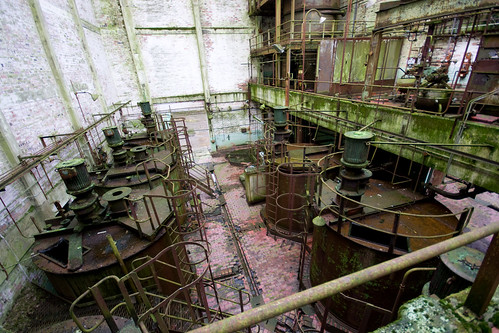
Each factory in Bishopton had it's own power plant - coal-fired steam boilers produced steam to heat every building (over 2000 buildings on site), and also drove generators to produce electricity. This is the Factory II generator house and cooling tower.
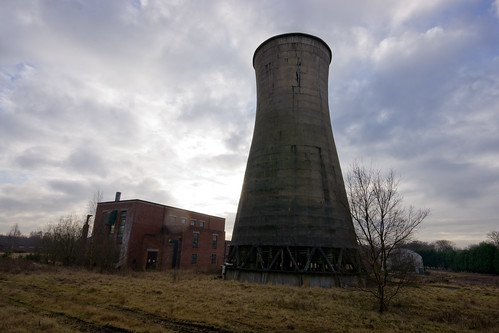
Cordite is a paste - a mix of nitroglycerine and nitrocellulose. It is worked damp to prevent fires, and it was processed in a variety of ways - one common way was to squeeze it out into rods - the rods would then be bundled together to make up a propellant charge. These presses (called Tangye presses) squeezed out the cordite onto a table where it was cut into lengths.
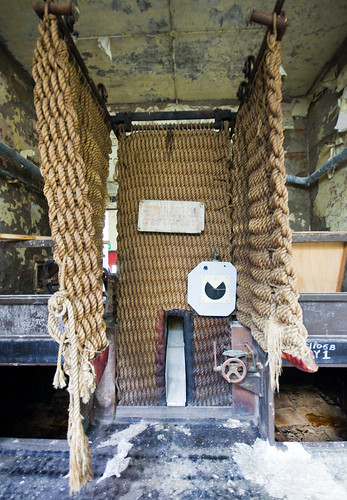
The press houses themselves were low buildings - there were rows of these.
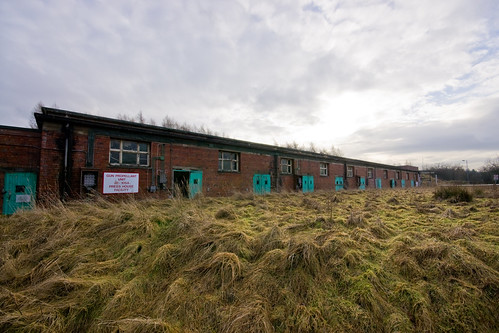
Nearby are the similar-looking Incorporating Houses, where the nitroglycerine and nitrocellulose are mixed together in what is, basically, an industrial baker's dough mixer.
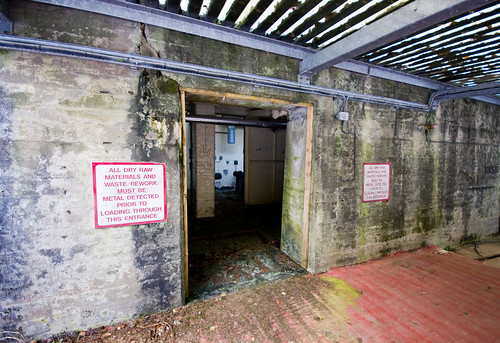
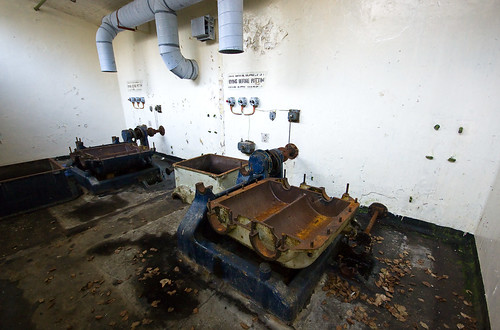
The blades of the mixer were cleaned after a mixing run by running the mixer with acetone-soaked rags. In one incident, the rags jammed and the operator tried to unjam them without turning the machine off. Hence the sign:
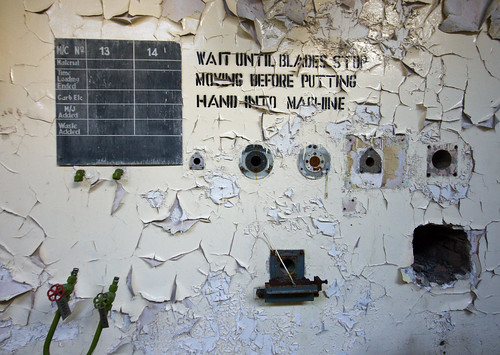
Some propellant didn't come out right - the extrusion didn't work so it was malformed. This would be broken up in a shear mill and mixed with acetone to soften it up for reprocessing in a mixer like this:
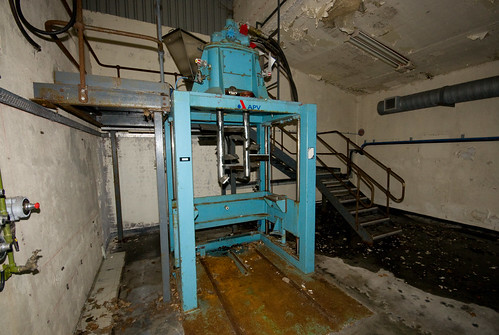
ROF Bishopton didn't do any ammunition filling (apart from white phosphorus) so the propellant was transported in crates by rail to the fillling factories. These crates in a cutting house were for rocket propellant.
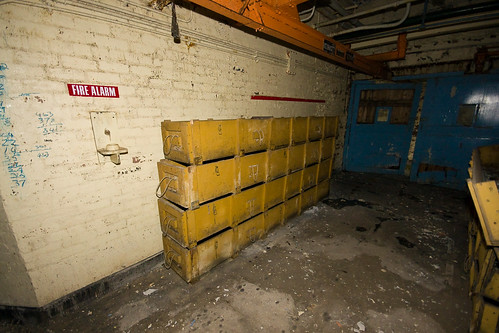
Corite was also rolled into sheets - the sheets would then be dried and chopped up to make granular propellant. The rolling mills are distinctive buildings with each rolling mill in a separate bay with a large square vent above. The mills themselves are missing from this one.
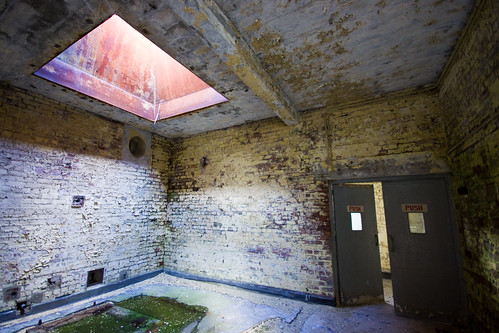
The wartime signs are still there, though.
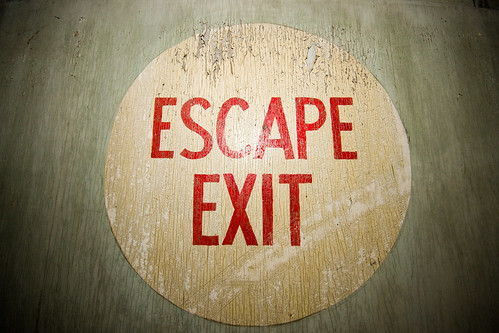
There are hundreds more pictures in my Flickr set - or you can wait for my definitive book on the Scottish explosives factories
This is one of the Bertrams beaters used to pulp guncotton:

One of the boilers used to boil acid out of the guncotton:

One of the glass columns in the Factory I acids section:

Seven farms were compulsiorially purchased to build Bishopton - some of the farm buildings were demolished, others were converted:

In the Combustible Charge Container section, cordite was pressed into casings using hydraulic presses.


The CCCs were then lacquered and dried in an oven, hanging from hooks on a conveyor.


The CCC section also had Bertrams beaters - each Factory at Bishopton (there were three) was almost totally independent, so there was a lot of duplication.

Near the CCC section is the Picrite Section - picrite is a flash-supressing additive. This is the old picrite section:

And the "new" picrite section:

Each factory in Bishopton had it's own power plant - coal-fired steam boilers produced steam to heat every building (over 2000 buildings on site), and also drove generators to produce electricity. This is the Factory II generator house and cooling tower.

Cordite is a paste - a mix of nitroglycerine and nitrocellulose. It is worked damp to prevent fires, and it was processed in a variety of ways - one common way was to squeeze it out into rods - the rods would then be bundled together to make up a propellant charge. These presses (called Tangye presses) squeezed out the cordite onto a table where it was cut into lengths.

The press houses themselves were low buildings - there were rows of these.

Nearby are the similar-looking Incorporating Houses, where the nitroglycerine and nitrocellulose are mixed together in what is, basically, an industrial baker's dough mixer.


The blades of the mixer were cleaned after a mixing run by running the mixer with acetone-soaked rags. In one incident, the rags jammed and the operator tried to unjam them without turning the machine off. Hence the sign:

Some propellant didn't come out right - the extrusion didn't work so it was malformed. This would be broken up in a shear mill and mixed with acetone to soften it up for reprocessing in a mixer like this:

ROF Bishopton didn't do any ammunition filling (apart from white phosphorus) so the propellant was transported in crates by rail to the fillling factories. These crates in a cutting house were for rocket propellant.

Corite was also rolled into sheets - the sheets would then be dried and chopped up to make granular propellant. The rolling mills are distinctive buildings with each rolling mill in a separate bay with a large square vent above. The mills themselves are missing from this one.

The wartime signs are still there, though.

There are hundreds more pictures in my Flickr set - or you can wait for my definitive book on the Scottish explosives factories
Last edited:




